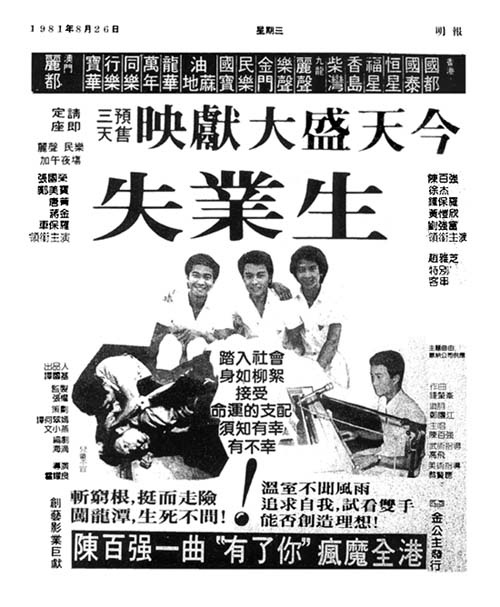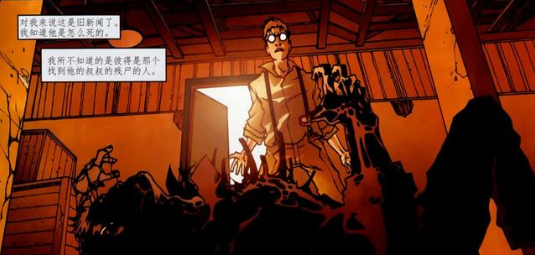Memorabilia of national statistical rule of law work
1983.12——2023.12
In 1983
On December 8th, president Li Xiannian signed Decree No.9 of the President of the People’s Republic of China, promulgating the Statistics Law of the People’s Republic of China, which came into effect on January 1st, 1984. The third session of the 6th the NPC Standing Committee passed the Statistics Law of the People’s Republic of China. The Statistics Law of the People’s Republic of China (hereinafter referred to as the Statistics Law) is the first statistical law in New China. The promulgation and implementation of "Statistics Law" indicates that China’s statistical work has begun to step into the track of rule of law.
In 1984
On January 1st, Li Chengrui, director of the National Bureau of Statistics, answered questions from Xinhua News Agency on the implementation of the Statistics Law.
On January 6th, the State Council issued the Decision on Strengthening Statistical Work.
In 1985
Beginning in November, the National Bureau of Statistics organized a major inspection of the implementation of the Statistics Law. This is the first national statistical law enforcement inspection. This major inspection lasted until the spring of 1986.
In 1986
On April 1st, with the approval of the Central Leading Group for Professional Title Reform, the National Bureau of Statistics issued the Trial Regulations on Statistical Professional Positions.
1987
On February 15th, approved by the State Council, the National Bureau of Statistics issued the Detailed Rules for the Implementation of the Statistics Law of the People’s Republic of China.
In late June, a symposium on inspection of statistical laws and regulations in some provinces (autonomous regions and municipalities) was held in Dalian, Liaoning Province.
1988
On May 14th, the second meeting of the Standing Committee of the Seventh People’s Congress of Guizhou Province passed the Trial Regulations on Statistical Management in Guizhou Province. This is the first local statistical law passed since the promulgation of the Statistics Law.
On August 10th, the "Three Definitions" Plan of the National Bureau of Statistics "issued by the State Editorial Committee stipulated that the National Bureau of Statistics should set up a policy and regulation department to be responsible for the formulation, revision, publicity and implementation, inspection and supervision of statistical regulations.
In September, the National Statistical Legal Work Conference was held in Taiyuan City, Shanxi Province. Zheng Jiaheng, deputy director of the National Bureau of Statistics, made a speech at the meeting entitled "Strengthening the construction of statistical legal system and promoting the development of statistical work and modernization".
In November, the National Bureau of Statistics issued the Interim Provisions on the Inspection of Statistical Laws and Regulations, the Notification System of Statistical Illegal Cases, and the Measures for the Appointment of Special Commissioners for Statistical Inspection.
1989
From January to October, the National Bureau of Statistics, the Legislative Affairs Bureau of the State Council and the Ministry of Supervision jointly carried out a nationwide inspection on the implementation of statistical laws and regulations. This major inspection found more than 51,000 statistical violations and handled more than 27,000 statistical violations.
On March 30th, the National Bureau of Statistics, the Legislative Affairs Bureau of the State Council and the Ministry of Supervision jointly held a telephone conference to check the implementation of national statistical laws and regulations. Yan Ying, Deputy Secretary-General of the State Council, Sai Zhang, Director of the National Bureau of Statistics, He Yong, Vice Minister of Supervision, and Huang Shuhai, Deputy Director of the Legislative Affairs Bureau of the State Council, spoke at the meeting.
On August 19th, with the approval of the State Council, the General Office of the State Council forwarded the Report of the National Bureau of Statistics on Strengthening Statistical Work and Giving Full Play to Statistical Supervision.
1990
On January 1st, with the approval of the State Council, Sai Zhang, director of the National Bureau of Statistics, signed Order No.1 of the National Bureau of Statistics, promulgating the Provisions on the Composition of Total Wages.
In 1991,
On May 21st, the National Bureau of Statistics issued the "Opinions on the Implementation of the Second Five-year Plan of the Central Committee on Carrying out Legal Publicity and Education among Citizens" (1991-1995).
On October 31st, the National Bureau of Statistics issued the Interim Provisions on the Investigation and Handling of Statistical Illegal Cases.
In 1993,
From May to November, to commemorate the 10th anniversary of the promulgation of the Statistics Law, the National Bureau of Statistics held a national knowledge contest on statistics, with 280,000 participants.
In December, Premier Li Peng wrote an inscription for the 10th anniversary of the promulgation of the Statistics Law: "Statistics according to law, accurate and timely".
On December 6th, the NPC Financial and Economic Committee and the National Bureau of Statistics jointly held a symposium in the Great Hall of the People to commemorate the 10th anniversary of the promulgation of the Statistics Law. Vice Chairman Chen Muhua attended the meeting and delivered a speech.
In 1994,
From May to October, the National Bureau of Statistics, the Ministry of Supervision and the Legislative Affairs Bureau of the State Council jointly organized and carried out a major inspection of the implementation of the national statistical law. This major inspection found more than 70,000 statistical violations, and put on record more than 8,000 statistical violations.
On May 26th, the National Bureau of Statistics, the Ministry of Supervision and the Legislative Affairs Bureau of the State Council jointly held a telephone conference to check the implementation of the national statistical law. Vice Premier Zou Jiahua attended the meeting and delivered a speech. Sai Zhang, director of the National Bureau of Statistics, and He Yong, member of the Standing Committee of the Central Commission for Discipline Inspection and Vice Minister of Supervision, spoke at the meeting.
On May 30th, Vice Chairman Huang Yicheng presided over the 15th plenary meeting of the NPC Financial and Economic Committee to discuss and study the inspection of the implementation of the Statistics Law. Shao Zongming, deputy director of the National Bureau of Statistics, reported to the members on the implementation of the Statistics Law.
In June, NPC Finance and Economics appointed eight members to form three inspection teams, and went to six provinces (cities) including Zhejiang, Jiangsu, Jiangxi, Guangdong, Hebei and Tianjin to inspect the implementation of the Statistics Law.
In August, the National Statistical Legal Work Conference was held in Qingdao, Shandong Province. Sai Zhang, Director of the National Bureau of Statistics, made a speech entitled "Running Statistics, Governing Statistics and Promoting Statistics according to Law".
the year of 1995
On January 29th, the National Bureau of Statistics and the State Administration for Industry and Commerce jointly issued the Interim Provisions on the Administration of Statistical Information Consulting Services.
On April 22nd, People’s Daily published an editorial "The Life of Statistics lies in Truth".
On June 28th, Sai Zhang, director of the National Bureau of Statistics, gave a report on statistical work at the 14th meeting of the 8th the NPC Standing Committee.
In 1996
On May 15th, Jiang Zemin, president signed Decree No.65 of the President of the People’s Republic of China, promulgating the Decision of the NPC Standing Committee on Amending the Statistics Law of the People’s Republic of China, which shall come into force as of the date of promulgation. The 19th meeting of the 8th the NPC Standing Committee adopted the Decision on Amending the Statistics Law of the People’s Republic of China.
On May 29th, the National Bureau of Statistics, the Ministry of Justice, the Ministry of Supervision and the Legislative Affairs Bureau of the State Council jointly held a national telephone conference to publicize and implement the Statistics Law. Vice Premier Zou Jiahua attended the meeting and delivered a speech.
In June, the Policy and Regulation Department of the National Bureau of Statistics and the Regulation Department of the Guangdong Provincial Bureau of Statistics were rated as advanced units of legal publicity and education in China from 1991 to 1995 by the Central Propaganda Department and the Ministry of Justice. Song Jinlai, director of the Regulation Department of the Hunan Provincial Bureau of Statistics, and Shan He, director of the Regulation Department of the Beijing Municipal Bureau of Statistics were rated as advanced individuals.
On June 11th, the National Bureau of Statistics issued a decision on commending advanced units and workers in the national statistical legal work.
On September 2nd, the National Bureau of Statistics issued the Third Five-year Plan for Publicity and Education of Statistical Legal System (1996-2000).
On December 11-15, the national statistical work conference was held in Beijing, focusing on the deployment of statistical legal system construction. Vice Premier Zou Jiahua attended the meeting and delivered a speech. Yang Jingyu, Deputy Secretary-General of the State Council and Director of Legal Affairs Bureau of the State Council, made a report on the legal work situation at the meeting.
In 1997
In the second and third quarters, the National Bureau of Statistics, the Ministry of Supervision and the Legislative Affairs Bureau of the State Council jointly organized a nationwide statistical law enforcement inspection. This major inspection found more than 60,000 statistical violations, and put on record more than 15,000 statistical violations.
On June 5th, the National Bureau of Statistics, the Ministry of Supervision and the Legal Affairs Bureau of the State Council jointly held a video conference on the national statistical law enforcement inspection. Vice Premier Zou Jiahua attended the meeting and delivered a speech. Liu Hong, director of the National Bureau of Statistics, He Yong, member of the Standing Committee of the Central Commission for Discipline Inspection and Vice Minister of Supervision, and Song Dahan, deputy director of the Legal Affairs Bureau of the State Council, spoke at the meeting.
In 1998
On June 2nd, the Central Commission for Discipline Inspection, the Organization Department of the Central Committee and the National Bureau of Statistics jointly held a video conference to publicize and implement the Notice of the General Office of the General Office of the Central Committee of the CPC and the State Council on Resolutely Opposing and Stopping Statistical Fraud (hereinafter referred to as the Notice of the Two Offices). Vice Premier Wen Jiabao proposed that statistical agencies and statisticians at all levels must abide by the "Three Chapters of the Contract". Cao Qingze, Deputy Secretary of the Central Commission for Discipline Inspection, Li Tielin, Vice Minister of the Central Organization Department, and Liu Hong, Director of the National Bureau of Statistics, spoke at the meeting.
In September, to commemorate the 15th anniversary of the promulgation of the Statistics Law, the National Bureau of Statistics and the Ministry of Justice jointly launched a national knowledge contest on statistics, with 500,000 participants.
In October, the Central Commission for Discipline Inspection, the Organization Department of the Central Committee and the National Bureau of Statistics jointly organized an inspection of the implementation of the "Notice of the Two Offices".
On October 12th, the National Bureau of Statistics issued the Interim Provisions for Statisticians to Work with Certificates.
In 1999,
On April 14th, the National Bureau of Statistics promulgated the Measures for the Administration of National Statistical Investigation Certificates by Order No.2..
On July 16th, the National Bureau of Statistics promulgated the Interim Measures for the Administration of Foreign-related Social Investigation Activities by Order No.3..
In October, the National Statistical Legal Work Conference was held in Xi ‘an, Shaanxi Province. Liu Hong, director of the National Bureau of Statistics, made a speech entitled "Actively promoting statistics according to law and striving to improve data quality".
On October 27th, the National Bureau of Statistics promulgated the Interim Measures for the Administration of Departmental Statistical Investigation Projects by Order No.4..
In 2000
On January 25th, Premier Zhu Rongji signed the State Council Decree No.277, promulgating the Measures for the Fifth National Population Census.
On January 27th, the National Bureau of Statistics set up an expert advisory group on administration according to law.
On June 15th, with the approval of the State Council, Liu Hong, director of the National Bureau of Statistics, signed Order No.5 of the National Bureau of Statistics, and issued the revised Detailed Rules for the Implementation of the Statistics Law of the People’s Republic of China.
In 2001
In May, the National Bureau of Statistics was rated as an advanced unit of legal publicity and education in China from 1996 to 2000 by the Propaganda Department of the Central Committee and the Ministry of Justice. Huang Changlin, director of the Policy and Regulation Department of Henan Statistics Bureau, Wang Huaqin, director of the Regulation Department of Liaoning Statistics Bureau, Lai Zhenhua, chief of the Regulation Department of hegang Statistics Bureau, and Yan Jiaying, researcher of the Legislative Popularization Department of the Policy and Regulation Department of the National Bureau of Statistics, were rated as advanced individuals.
From late May to the end of September, the National Bureau of Statistics, the Ministry of Supervision and the Ministry of Justice jointly carried out a major inspection of the implementation of the Statistics Law and the Notice of the Two Offices. This major inspection found more than 62,000 statistical violations, and put on record more than 19,000 statistical violations.
On June 4th, the National Bureau of Statistics, the Ministry of Supervision and the Ministry of Justice jointly held a teleconference on the national inspection of the implementation of the Statistics Law and the Notice of the Two Offices. Zhu Zhixin, Director of the National Bureau of Statistics, Chen Changzhi, Vice Minister of Supervision, and Liu Kui, Vice Minister of Justice, spoke at the meeting.
On June 20th, the National Bureau of Statistics promulgated the Statistical Law Enforcement Inspection Regulations by Order No.6..
On July 17th, the National Bureau of Statistics issued the Fourth Five-year Plan for Publicity and Education of Statistical Legal System (2001-2005).
In 2002
On October 28th, when Premier Zhu Rongji and Vice Premier Wen Jiabao visited the National Bureau of Statistics, they wrote inscriptions: "No False Figures" and "True and Reliable" respectively.
In 2003
From July to September, in commemoration of the 20th anniversary of the promulgation of the Statistics Law, the National Bureau of Statistics conducted a survey on statistical legal awareness.
On July 24th, the National Bureau of Statistics issued the Measures for the Inspection Work of the National Bureau of Statistics.
In August, the National Bureau of Statistics set up a special column on the portal website and work information network to commemorate the 20th anniversary of the promulgation of the Statistics Law, and released relevant information.
From August to December, the National Bureau of Statistics launched the first national selection campaign for advanced units and individuals according to law, and selected 325 advanced units and 416 advanced individuals.
In August, to commemorate the 20th anniversary of the promulgation of the Statistics Law, the National Bureau of Statistics and the Ministry of Justice jointly launched a national knowledge contest on statistics, with 593,000 participants.
On November 4-6, the National Statistical Legal Work Conference was held in Haikou City, Hainan Province. Li Deshui, director of the National Bureau of Statistics, pointed out that statistical work must adhere to statistics according to law for a long time.
In November, the National Bureau of Statistics presented the Statistics Law to 2,985 NPC deputies and 2,238 Chinese People’s Political Consultative Conference members. At the same time, Li Deshui, director of the National Bureau of Statistics, wrote to all delegates and members, welcoming the support and supervision of statistical work.
On November 28th, the National Bureau of Statistics made a decision on commending the top ten pacesetters of national statistical law enforcement, and awarded the honorary title of "Top Ten pacesetters of national statistical law enforcement" to 10 comrades including Liu Ye, Sai Linga, Sun Xiangbin, Li Yanbin, Zhang Xiaowei, Wan Zhigui, Shang Youtun, Li Yang, Li Jun and Song Jinglun. On December 24th, People’s Daily published the advanced deeds of the top ten pacesetters.
On December 5-14, the short publicity film of Statistics Law produced by the National Bureau of Statistics was broadcast 29 times in the prime time of CCTV.
On December 8, the NPC Financial and Economic Committee, the the National People’s Congress Standing Committee (NPCSC) Law Commission, the National Bureau of Statistics, the Legislative Affairs Office of the State Council and the Ministry of Justice jointly held a symposium in the Great Hall of the People to commemorate the 20th anniversary of the promulgation of the Statistics Law. Vice Chairman He Luli attended the meeting and delivered a speech.
In 2004
On January 14th, the National Bureau of Statistics issued the "Decision on Commending Advanced Units and Individuals in Statistics by Law in China", and awarded the honorary title of "Advanced Units in Statistics by Law in China" to 325 units including the Beijing Municipal Bureau of Statistics, and the honorary title of "Advanced Individuals in Statistics by Law in China" to 416 comrades including Ma Xiaoxuan.
On September 5th, Premier Wen Jiabao signed the State Council Decree No.415th, promulgating the Regulations on National Economic Census, which will come into force as of the date of promulgation.
On October 13th, the National Bureau of Statistics promulgated the Measures for the Administration of Foreign-related Investigations by Order No.7.
On October 29th, the National People’s Congress Standing Committee (NPCSC) Statistics Law Enforcement Inspection Team held its first plenary meeting, which officially started the National People’s Congress Standing Committee (NPCSC)’s inspection on the implementation of Statistics Law. This is the first time that the highest organ of state power and the legislature have conducted a comprehensive inspection and supervision of statistical work. Vice Chairman Jiang Zhenghua attended the meeting and delivered a speech. The meeting made comprehensive arrangements for the inspection work. Afterwards, the the National People’s Congress Standing Committee (NPCSC) law enforcement inspection team was divided into four inspection teams and went to Inner Mongolia, Liaoning, Zhejiang, Chongqing and other four provinces (autonomous regions and municipalities) for inspection; Entrusted the Standing Committee of the People’s Congress of Tianjin, Shandong, Hubei, Yunnan, Xinjiang and other five provinces (autonomous regions and municipalities) to inspect the implementation of the statistical law in this administrative region.
On November 24th, People’s Daily published an interview article on "Squeezing out the" digital moisture "according to law —— Vice Chairman Jiang Zhenghua’s talk on law enforcement inspection of statistical law".
In December, the Office of the Leading Group for the First National Economic Census in the State Council and the National Bureau of Statistics announced the telephone number and e-mail address for reporting illegal activities in the economic census, and accepted the report and supervision of illegal activities of units and individuals in the economic census from all walks of life.
On December 2nd, the National Bureau of Statistics issued an announcement to announce 30 statistical illegal cases investigated and dealt with by local statistical departments in recent years. This is the first time that the National Bureau of Statistics has concentrated on exposing statistical illegal cases to the society.
In 2005
On May 11th, the revision of the Statistics Law was officially launched. In order to conscientiously implement the "Report of the National People’s Congress Standing Committee (NPCSC) Law Enforcement Inspection Team on Checking the Implementation of the Statistics Law of the People’s Republic of China" and the spirit of the State Council’s instructions, the Party Group Meeting of the National Bureau of Statistics decided to set up a leading group for the revision of the Statistics Law, and set up a working group and an expert advisory group for the revision of the Statistics Law.
On May 16th, the National Bureau of Statistics promulgated the Measures for Determining the Qualification of Statistical Practitioners by Order No.8..
On December 16th, Premier Wen Jiabao signed the State Council Order No.453, promulgating the Decision of the State Council on Amending the Detailed Rules for the Implementation of the Statistics Law of the People’s Republic of China, which will take effect on February 1st, 2006.
In 2005, around the first national economic census, the National Bureau of Statistics directly investigated 11 cases of statistical violations, notified 5 of them and imposed administrative sanctions on 7 responsible persons. Since the beginning of the economic census, 5377 cases of violation of discipline and law in the economic census have been investigated and dealt with nationwide.
In 2006
On March 31st, the National Bureau of Statistics issued the Decision on Commending the Advanced Collectives and Individuals in the National Statistical Law Popularization Work during the Fourth Five-Year Plan, and awarded the honorary title of "Advanced Unit of National Statistical Legal Publicity and Education in 2001-2005" to 207 units including Beijing Dongcheng District Bureau of Statistics, and awarded the honorary title of "Advanced Individual of National Statistical Legal Publicity and Education in 2001-2005" to 217 comrades including Huo Runtao.
On July 13th, the National Bureau of Statistics issued the Fifth Five-year Plan for National Statistical Legal Publicity and Education (2006-2010).
On August 17th, the National Bureau of Statistics set up a statistical illegal report acceptance center and announced the telephone number and e-mail address of the report to the public. CCTV’s "News Network" broadcast an interview with Lin Xianyu, deputy director of the National Bureau of Statistics.
On August 23rd, Premier Wen Jiabao signed the State Council Decree No.473, promulgating the Regulations on the National Agricultural Census, which will come into force as of the date of promulgation.
In 2007
On January 16th, the Office of the Leading Group for the Second National Agricultural Census in the State Council and the National Bureau of Statistics issued the "Urgent Notice on Intensifying the Investigation and Punishment of Cases of Violation of Laws and Discipline in Agricultural Census and Resolutely Stopping Interference with Census Data".
On February 15th, the Office of the Leading Group for Agricultural Census in the State Council and the National Bureau of Statistics issued a document to inform the relevant issues of fraud in agricultural census.
On March 13th, the National Bureau of Statistics issued Announcement No.1 in 2007, commending and rewarding 11 outstanding recommenders, including Li Jun, who put forward opinions and suggestions on the revision of the Statistics Law.
On August 27th, the National Bureau of Statistics promulgated the Measures for the Administration of Statistical Investigation Certificates by Decree No.11..
From September to December, the National Bureau of Statistics organized and participated in the 5th National Legal Painting and Calligraphy Exhibition organized by the National Law Popularization Office, and received nearly 100 works, and recommended 68 entries. Among them, the calligraphy works of Sheng Minzheng and Comrade Ma Jiankui won the Fifth National Award for Excellence in Legal Publicity and Calligraphy Works, and the National Bureau of Statistics won the Organization Award.
On October 26th, the National Bureau of Statistics promulgated the Decision of the National Bureau of Statistics on Abolishing Some Regulations and Normative Documents by Decree No.12.
the year of 2008
In October, the Office of the Leading Group for the Second National Economic Census in the State Council and the National Bureau of Statistics announced the telephone number and e-mail address for reporting illegal activities in the economic census, and accepted the report and supervision of illegal activities of units and individuals in the economic census from all walks of life.
In December, the National Bureau of Statistics set up a special column on the portal website and work information network to commemorate the 25th anniversary of the promulgation of the Statistics Law, and released relevant information.
In 2009
In January, the Office of the National Bureau of Statistics reported the subsidy owed to census takers and its handling.
On March 25th, the Ministry of Supervision, Ministry of Human Resources and Social Security and the National Bureau of Statistics promulgated the "Provisions on the Punishment of Statistical Violations and Disciplinary Actions" by Decree No.18.
On June 27th, president Hu Jintao signed Decree No.15 of the President of the People’s Republic of China, promulgating the revised Statistics Law of the People’s Republic of China, which will come into force on January 1st, 2010. The ninth session of the 11th the NPC Standing Committee adopted the newly revised Statistics Law of the People’s Republic of China.
On November 20th, the National Bureau of Statistics, the Ministry of Justice and the National Law Popularization Office jointly issued the Notice on Seriously Studying and Publicizing the Statistics Law of the People’s Republic of China, requiring all localities, departments and units to do a good job in publicizing the statistics law and promote the full implementation of the newly revised Statistics Law.
On November 21st, People’s Daily published the newly revised Statistics Law.
On December 17th, the National Bureau of Statistics held a study report on the new Statistics Law, and preached the new Statistics Law to the national statistical system through online video.
In December, the National Bureau of Statistics launched a series of publicity activities on the new Statistics Law in China Information Daily and China Statistics Information Network, published nine editorials and commentator articles, held an essay-writing activity on "I and Statistics Law", opened a column to publish the new statistics law, and timely reported on the study and implementation of the new statistics law and publicity month activities by the National Bureau of Statistics and various local departments.
In 2009, the National Bureau of Statistics focused on the second national economic census and other work, and strengthened the direct investigation and handling of statistical illegal cases, with a total of 12 cases directly investigated and dealt with throughout the year.
2010 years
On January 1st, CCTV’s "News Network" program broadcast the news about the implementation of the newly revised Statistics Law, and on the "Evening News" program broadcast the report that Ma Jiantang, director of the National Bureau of Statistics, was interviewed by CCTV about the implementation of the new Statistics Law.
On January 5th, People’s Daily published an article signed by Ma Jiantang, director of the National Bureau of Statistics, on "Strictly implementing the statistical law and improving the quality of statistical data".
On March 23, the National Bureau of Statistics issued the Notice on Carrying out the Inspection and Acceptance of Statistical Law Popularization during the Fifth Five-Year Plan.
From May to November, the National Bureau of Statistics, the Ministry of Supervision and the Ministry of Justice jointly organized a nationwide inspection of the implementation of the Statistics Law and the Provisions on the Punishment of Statistical Violations and Disciplinary Actions. During the inspection, 9,415 cases of violation of laws and regulations were investigated and dealt with nationwide. In 2010, a total of 14,428 cases of violation of laws and regulations were investigated and dealt with nationwide.
On May 24th, Premier Wen Jiabao signed the State Council Decree No.576, promulgating the Regulations on National Population Census, which came into effect on June 1st, 2010.
On June 1st, the National Bureau of Statistics, the Ministry of Supervision and the Ministry of Justice jointly held a video conference to check the implementation of the National Statistics Law and the Provisions on the Punishment of Statistical Violations and Disciplinary Actions. Ma Jiantang, Director of the National Bureau of Statistics, Hao Mingjin, Vice Minister of Supervision, and Jason. JS, Vice Minister of Justice, spoke at the meeting.
In July, the National Bureau of Statistics reported six cases of statistical violations directly investigated and dealt with during the second national economic census in the statistical system.
In 2011
On May 5th, the Propaganda Department of the Central Committee and the Ministry of Justice issued the Decision on Commending the Advanced Collectives and Individuals in National Legal Publicity and Education from 2006 to 2010, and awarded the honorary titles to Beijing Bureau of Statistics/Beijing Investigation Corps of the National Bureau of Statistics, Fujian Provincial Bureau of Statistics, Sichuan Investigation Corps of the National Bureau of Statistics and Shanxi Provincial Bureau of Statistics, and awarded them to statistical systems Yu Qionghua, Liang Jingyu, He Yong, Yan Hua and Liang Jingyu.
On May 6, the Office of the Central Organization Establishment Committee approved the National Bureau of Statistics to add a brand of statistical law enforcement inspection room in the Department of Policies and Regulations.
On May 30th, 10 episodes of statistical legal animation propaganda film "Take You into Statistical Law" created by Beijing Bureau of Statistics/Beijing Investigation Corps of National Bureau of Statistics won the third prize of the 8th National Legal Animation Works Collection organized by the National Law Popularization Office.
On August 15th, the National Bureau of Statistics issued the National Statistical Legal Publicity and Education Plan for 2011-2015.
On December 14th, the National Bureau of Statistics issued the "Decision on Commending Advanced Units and Individuals in National Statistical Legal Publicity and Education from 2006 to 2010", which awarded the honorary title of advanced unit in national statistical legal publicity and education from 2006 to 2010 to 192 units including Beijing Dongcheng District Bureau of Statistics/Dongcheng Investigation Team of National Bureau of Statistics, and awarded the honorary title of advanced individual in national statistical legal publicity and education from 2006 to 2010 to 341 comrades including Song Yuru.
In 2012
On January 19th, the National Bureau of Statistics implemented the notification system of statistical legal affairs throughout the country, and issued the Notification of Statistical Legal Affairs to all enterprises that were included in the "one set of forms" online direct reporting scope of enterprises, informing enterprises of their legal rights and legal obligations, and requiring enterprises to submit statistical statements according to law.
In April, the National Bureau of Statistics, the National Development and Reform Commission, the Ministry of Industry and Information Technology, the Ministry of Housing and Urban-Rural Development, and the Ministry of Commerce jointly issued the Notice on Doing a Good Job in Online Direct Reporting of Enterprises to Ensure the Quality of Statistical Data. The State-owned Assets Supervision and Administration Commission of the State Council and the National Bureau of Statistics jointly issued the Notice on Cooperating in Doing a Good Job in Online Direct Reporting of a Set of Tables.
In September, the National Bureau of Statistics established a national statistical law enforcement backbone talent pool. The talent pool consists of more than 120 experienced statistical law enforcement officers with excellent political skills.
In 2013
On April 25th, the National Bureau of Statistics issued the Notice on Launching the 30th Anniversary Publicity Campaign of the Statistics Law of the People’s Republic of China.
On May 15th, the Office of the National Bureau of Statistics issued the Notice on Doing a Good Job in the Mid-term Inspection and Supervision of National Statistics during the Sixth Five-Year Plan.
On September 18th, the Office of the National Bureau of Statistics issued the Notice on Holding a Knowledge Competition on Statistics Law and National Economic Census Regulations. The number of participants reached more than 750,000.
On August 7th, the Office of the National Bureau of Statistics issued the Notice on Launching the National Statistical Rule of Law Essay Campaign and the National Statistical Publicity Slogan Collection Campaign. This activity collected more than 1,800 articles and more than 5,000 slogans.
In December, the National Bureau of Statistics launched a centralized publicity campaign to commemorate the 30th anniversary of the promulgation of the Statistics Law. Ma Jiantang, director of the National Bureau of Statistics, published a signed article entitled "Unswervingly Follow the Road of Statistics according to Law" on Xinhuanet and Economic Daily. Broadcast the video speech of Director Ma Jiantang commemorating the 30th anniversary of the promulgation of the Statistics Law on the portal website and work information network of the National Bureau of Statistics. Set up a special column to commemorate the 30th anniversary of the promulgation of the Statistics Law on the portal website and work information network of the National Bureau of Statistics, and release relevant information. In the "China Information News" and China Statistical Information Network, we carried out centralized publicity, published editorials and opened up columns.
In 2014
On November 27th, the National Bureau of Statistics issued the Interim Measures for Information Publicity of Statistically Serious Dishonest Enterprises.
On December 3rd, with the consent of the State Council, the General Office of the State Council forwarded the Opinions of the National Bureau of Statistics on Strengthening and Improving the Statistical Work of Departments.
In 2014, the National Bureau of Statistics focused on the third national economic census to carry out statistical law enforcement inspection.
In 2015
On March 10th, the National Bureau of Statistics held a meeting of directors of provincial statistical bureaus, asking statistical agencies at all levels to seriously study and understand the spirit of the important instructions of the Supreme Leader General Secretary, seriously investigate and deal with statistical fraud, and resolutely curb "digital corruption".
On June 2-3, the National Bureau of Statistics held the 2015 National Conference on Statistical Rule of Law, and arranged for the directors of provincial statistical bureaus and the chief of the investigation team of the National Bureau of Statistics to perform the first responsibility of governing the country according to law.
In June, the National Bureau of Statistics set up a column of "Statistical Rule of Law Construction" on the portal website and work information network.
the year of 2016
On February 23rd, the National Bureau of Statistics issued the Implementation Plan for Promoting Random Sampling by Statistical Departments, and established a "double random" sampling mechanism for statistical law enforcement inspection.
On March 1st, the National Bureau of Statistics issued the Notice on Comprehensively Cleaning up and Correcting the Documents and Practices Violating the Spirit of the Statistics Law, demanding that the documents and practices violating the spirit of the Statistics Law, such as taking the statistics department as the responsible unit for local target completion, be resolutely corrected.
On March 16th, the Ministry of Supervision issued the Circular on Five Typical Problems of Statistical Violation.
On May 20th, Beijing Municipal Bureau of Statistics and Shandong Investigation Corps of the National Bureau of Statistics were rated as advanced units of publicity and education on the rule of law in 2011-2015 by the Central Propaganda Department, the Ministry of Justice and the National Law Enforcement Office. The Policy and Regulation Department of the National Bureau of Statistics (the Office of the Leading Group for Popularizing Law in the Sixth Five-Year Plan of National Statistics) was named as the Office of Advanced Legal Publicity and Education, Wen Qin, Director of the Regulation Department of Gansu Provincial Bureau of Statistics, zhangqian, Director of the Regulation and System Department of Tianjin Investigation Corps of the National Bureau of Statistics, and Zhang Ting, member of the Law Enforcement Department of Luzhou Municipal
On May 24 and 26, the National Bureau of Statistics held a spiritual department symposium and a systematic symposium to implement the important instructions of the Supreme Leader General Secretary on statistical work, demanding that statistics should be kept according to law, governance should be governed by law, statistical law enforcement should be strengthened, reform and innovation should be promoted, and the quality of statistical data should be continuously improved.
On October 11th, General Secretary of the Supreme Leader presided over the 28th meeting of the Central Leading Group for Comprehensively Deepening Reform, and deliberated and adopted the Opinions on Deepening the Reform of Statistical Management System and Improving the Authenticity of Statistical Data.
On October 25th, the National Bureau of Statistics issued the Seventh Five-year Plan for National Statistical Publicity and Education on Rule of Law (2016-2020).
On November 25th, the National Bureau of Statistics held the first constitutional oath ceremony.
On December 30th, 27 departments, including the National Development and Reform Commission, the People’s Bank of China and the National Bureau of Statistics, jointly signed and issued the Memorandum of Cooperation on Joint Punishment of Enterprises with Serious Dishonesty in the Statistical Field and Their Relevant Personnel.
the year 2017
On January 26th, the Central Editorial Office made the Reply on the Adjustment of the Internal Structure of the National Bureau of Statistics, and agreed to set up the Bureau of Statistics Law Enforcement and Supervision.
On February 8th, Vice Premier Zhang Gaoli went to the National Bureau of Statistics for investigation, presided over and delivered a speech at the symposium on implementing the Opinions of the Central Committee on Deepening the Reform of Statistical Management System and Improving the Authenticity of Statistical Data.
On March 30-31, the National Bureau of Statistics held the 2017 National Conference on Statistical Rule of Law, thoroughly studied and implemented the Opinions of the Central Committee on Deepening the Reform of Statistical Management System to Improve the Authenticity of Statistical Data, further promoted the construction of statistical rule of law, and provided a solid legal guarantee for improving the authenticity and accuracy of statistical data.
On April 20th, the National Bureau of Statistics held the inauguration ceremony of the Bureau of Statistical Law Enforcement Supervision.
On May 28th, Premier Li Keqiang signed the State Council Order No.681, promulgating the Regulations for the Implementation of the Statistics Law of the People’s Republic of China, which will take effect on August 1st.
On June 26th, General Secretary of the Supreme Leader presided over the 36th meeting of the Central Leading Group for Comprehensively Deepening Reform, and deliberated and adopted the Reform Plan for Unified Accounting of Regional Gross Domestic Product, Suggested Measures for Punishment of Persons Responsible for Statistical Violations and Laws, and Work Plan for the Preparation of National and Local Balance Sheets.
From June to July, the National Bureau of Statistics promulgated the Administrative Measures for Statistical Investigation Certificates, Administrative Measures for Statistical Law Enforcement Certificates, Administrative Measures for Statistical Law Enforcement Supervision and Inspection, and Administrative Measures for Departmental Statistical Investigation Projects.
In October, the 19th National Congress of the Communist Party of China made a major decision to "improve the statistical system".
In 2017, the National Bureau of Statistics focused on the third national agricultural census to carry out statistical law enforcement inspections.
the year of 2018
From April to June, the 13th the National People’s Congress Standing Committee (NPCSC) carried out an inspection on the implementation of the Statistics Law. Ji Bingxuan, Vice Chairman of the Standing Committee of the National People’s Congress, Chen Zhu and Wang Dongming led teams to six provinces (autonomous regions) to carry out inspections, and entrusted the standing committees of seven provinces (autonomous regions and municipalities) to inspect the implementation of the Statistics Law within their respective administrative areas.
On July 6, General Secretary of the Supreme Leader presided over the third meeting of the Central Committee for Comprehensively Deepening Reform, and deliberated and adopted the Provisions on Preventing and Punishing Statistical Falsification and Fraud Supervision. On September 16th, Xinhua News Agency released the "Regulations on the Prevention and Punishment of Statistical Fraud and Fraud Supervision" issued by the General Offices of the General Office of the Central Committee of the CPC and the State Council.
In July, the National Bureau of Statistics initiated the revision of the Statistics Law, and established a leading group for the revision of the Statistics Law, headed by Ning Ji Zhe, director of the National Bureau of Statistics.
On August 11th, Premier Li Keqiang signed the State Council Order No.702, promulgating the State Council’s Decision on Amending the Regulations on National Economic Census, which will come into force as of the date of promulgation. In August, the heads of the Ministry of Justice and the National Bureau of Statistics answered questions on the Decision of the State Council on Amending the Regulations on the National Economic Census.
On August 28th, the National Bureau of Statistics held the 2018 National Conference on Statistical Rule of Law to clarify the specific tasks of preventing and punishing statistical fraud and fraud, and push statistics according to law to a new level.
On September 7th, the National People’s Congress Standing Committee (NPCSC) announced the 13th the National People’s Congress Standing Committee (NPCSC) legislative plan, and the revision of the Statistics Law was included in the legislative plan as the second category.
On September 29th, the National Bureau of Statistics issued the Notice on Carrying out the Inventory of Local Statistical Investigation Projects, and carried out the inventory of local statistical investigation projects nationwide.
In October, the qualification platform of foreign-related statistical investigation institutions of the National Bureau of Statistics was put into operation.
2019
From March 19 to 23, the National Bureau of Statistics hosted the "National Seminar on Statistics for Leading Cadres at the Prefecture (city) level according to law" for the first time in the form of "entrusting ministries to run classes" by the Central Organization Department. Forty-one responsible comrades of municipal (prefecture, league) party committees and governments in charge of statistics from 26 provinces (autonomous regions and municipalities) participated in the training. In 2021 and 2023, we will continue to hold the "National Special Seminar on Statistics of Leading Cadres at the Prefecture (City) Level".
On August 18-19, the National Bureau of Statistics held the 2019 National Conference on Statistical Rule of Law, to further promote the work of statistical rule of law and the construction of professional ethics in the field of statistics, to compact the responsibility of preventing and punishing statistical fraud and fraud in all regions, departments and statistical institutions at all levels, and to effectively safeguard and improve the quality of statistical data.
In October, the Fourth Plenary Session of the 19th CPC Central Committee made a major decision to "play the role of statistical supervision".
From October to November, authorized by the CPC Central Committee and the State Council, the National Bureau of Statistics conducted statistical inspections for the first time in nine provinces (regions) such as Shanxi, Liaoning, Jilin, Jiangsu, Anhui, Henan, Sichuan, Yunnan and Ningxia, and two the State Council departments such as the Ministry of Transport and the Ministry of Culture and Tourism, and implemented the decision-making arrangements of the CPC Central Committee and the State Council on statistical reform and development, fulfilled their statutory duties in statistics, and established prevention and punishment for the inspected areas and departments. From 2019 to 2021, the National Bureau of Statistics set up 43 statistical inspectors in succession, and carried out the first round of routine statistical inspectors in 31 provinces (autonomous regions and municipalities), Xinjiang Production and Construction Corps and 12 the State Council departments in three batches, achieving "full coverage" of routine statistical inspectors of provincial party committees and governments.
In 2019, the National Bureau of Statistics focused on the fourth national economic census to carry out statistical law enforcement inspections.
the year of 2020
On May 22nd, Ning Ji Zhe, director of the National Bureau of Statistics, made a guest visit to the special program "Yangguang Meeting Room" of Voice of China 2020 at the Central Radio and Television General Station to introduce the work of statistical supervision to the public.
In May, for the first time, the National Bureau of Statistics set up a statistical inspector column on the portal website and work information network of the National Bureau of Statistics.
On July 17, the National Bureau of Statistics, the General Administration of Market Supervision and the Ministry of Commerce jointly issued the Notice on Carrying out Special Law Enforcement Inspection of Foreign-related Investigations, and organized provincial statistical bureaus to cooperate with relevant departments to carry out full coverage special law enforcement inspection of investigation institutions that have obtained foreign-related investigation qualifications.
On July 30-31, the National Bureau of Statistics held the 2020 National Conference on Statistical Rule of Law, demanding to consolidate the achievements of preventing and punishing statistical fraud and expand and explore effective forms to play the role of statistical supervision.
In 2021
On May 13th, the National Bureau of Statistics held the 2021 National Conference on Statistical Rule of Law, summed up the work of statistical rule of law in the 13th Five-Year Plan period, studied the new tasks and requirements faced by the construction of statistical rule of law, and deployed the key tasks of statistical rule of law in the current and future period.
On May 31st, the National Bureau of Statistics issued the Plan for the Construction of Rule of Law Statistics (2021-2025).
On August 30th, General Secretary of the Supreme Leader presided over the 21st meeting of the Central Committee for Comprehensively Deepening Reform, and deliberated and adopted the Opinions on Giving Full Play to the Function of Statistical Supervision. On December 21st, Xinhua News Agency released the full text of the Opinions on Giving Full Play to the Function of Statistical Supervision issued by the General Offices of the General Office of the Central Committee of the CPC and the State Council.
On September 7th, the National Bureau of Statistics issued the Eighth Five-year Plan for National Statistical Publicity and Education on Rule of Law (2021-2025).
On December 28th, the Legislative Popularization Division of Statistics Law Enforcement Supervision Bureau of National Bureau of Statistics, the Regulation Division of Beijing Bureau of Statistics, the Law Enforcement Supervision Division of Guangdong Investigation Corps of National Bureau of Statistics, and the Policy and Regulation Division of Chongqing Bureau of Statistics were rated as advanced units of national law popularization work from 2016 to 2020 by the Central Propaganda Department, the Ministry of Justice and the National Law Popularization Office. Yang Rongsun, the third-level researcher of Statistics Law Enforcement Supervision Bureau of Zhejiang Statistics Bureau, Wang Zhaorui, the third-level director of Law Enforcement Supervision Department of Shandong Investigation Corps of National Bureau of Statistics, Mu Jing, the fourth-level researcher of Tianjin Statistics Bureau, and Li Zhi, the deputy director of Policy and Regulation Department of Yunnan Statistics Bureau, were rated as advanced individuals, and the statistics bureau of Xicheng District of Beijing and Suizhou City of Hubei Province were rated as advanced units in the national governance activities.
In 2022
On March 29th, the National Bureau of Statistics held a national video conference on statistical rule of law in 2022, systematically summarized the statistical rule of law work in the past five years, studied the new situation, new tasks and new requirements facing the current rule of law by statistics according to law, and deployed the key work of statistical rule of law in 2022.
On May 25th, the National Bureau of Statistics promulgated the Measures for the Credit Management of Enterprises with Serious Dishonest Statistics by Order No.35..
On May 30, the National Bureau of Statistics held a video conference to deploy and carry out special rectification work on the problem of statistical fraud.
From July to August, according to the authorization of the CPC Central Committee and the State Council, the National Bureau of Statistics conducted statistical inspections in five provinces (cities) such as Anhui, Jiangxi, Henan, Chongqing and Sichuan, and two the State Council departments such as the Ministry of Education and the Ministry of Agriculture and Rural Affairs.
In 2023
On February 25th, the National Bureau of Statistics launched a special campaign against statistical fraud. The special governance action will last until February 2024.
On March 24th, the National Bureau of Statistics issued the Notice on Launching the 40th Anniversary Publicity Campaign of the Statistics Law of the People’s Republic of China.
On April 15th, Kang Yi, director of the National Bureau of Statistics, was invited to give a special report to all the students of the Central Party School (National School of Administration) in the spring semester of 2023. Focusing on the in-depth study and implementation of the instructions of the important speech of the Supreme Leader General Secretary on statistical work, he deeply interpreted the normative system of statistical laws and regulations, and systematically expounded the main tasks of deepening statistics and governing the country according to law.
In May, the National Bureau of Statistics set up a special column on the portal website and work information network for the 40th anniversary of the promulgation of the Statistics Law to release relevant information.
From July to August, authorized by the CPC Central Committee and the State Council, the National Bureau of Statistics carried out special statistical inspections in six provinces including Hebei, Heilongjiang, Henan, Hunan, Guizhou and Shaanxi.
On August 22nd, the Office of the National Bureau of Statistics issued the Notice on Launching the "Statistical Law in My Heart" essay activity. This activity collected more than 3000 essays.
On August 25th, the National Bureau of Statistics issued the Notice on Doing a Good Job in the Mid-term Evaluation of the National Statistical "Eighth Five-Year Plan".
On August 28-29, the National Bureau of Statistics held the 2023 National Conference on Statistical Rule of Law, analyzed the new situation and new tasks of preventing and controlling statistical fraud, continued to deepen special governance actions and the construction of a rigid system for preventing and controlling statistical fraud, and promoted the in-depth development of statistics according to law and the rule of law.
On September 7th, the National People’s Congress Standing Committee (NPCSC) announced the 14th the National People’s Congress Standing Committee (NPCSC) legislative plan, and the revision of the Statistics Law was included in the legislative plan as the second category.
On November 6, the relevant person in charge of the National Bureau of Statistics answered a reporter’s question on printing and distributing the "Report System of Leading Cadres’ Intervention in Statistical Work".
From November to December, the National Bureau of Statistics launched a new round of regular statistical inspectors. According to the authorization of the CPC Central Committee and the State Council, the National Bureau of Statistics conducted routine statistical inspections in six provinces (regions) including Inner Mongolia, Anhui, Hubei, Guangxi, Sichuan and Yunnan, and two the State Council departments including the Ministry of Natural Resources and the Ministry of Commerce.
In December, the National Bureau of Statistics launched a centralized publicity campaign for the 40th anniversary of the promulgation of the Statistics Law. Kang Yi, director of the National Bureau of Statistics, published a signed article on People’s Daily Online, entitled "Deeply Studying the Supreme Leader’s Thought of Rule of Law and Striving to Create a New Situation of Statistical Rule of Law Construction". China Information Daily, the website of the National Bureau of Statistics, Statistical Micro-message and other statistical publicity platforms commemorated the 40th anniversary of the promulgation of the Statistics Law by publishing editorials, launching micro-videos of statistical rule of law propaganda, and publishing excellent essays on "Statistics Law in My Heart". Local statistical bureaus and national investigation teams at all levels have carried out various forms and rich contents of publicity activities.





























































